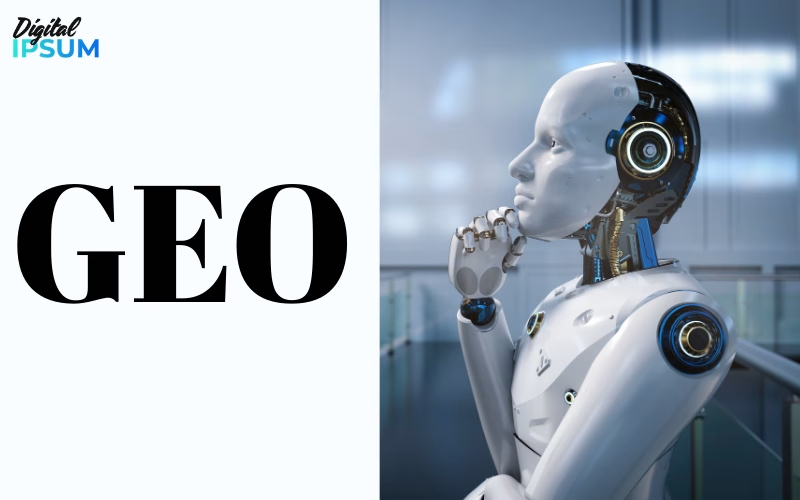If you’re still creating content only for traditional search engines… let’s pause for a reality check:
The future of search is generative. AI-driven search assistants, chatbots, and engines like Google SGE, Perplexity, and ChatGPT are reshaping how architects, designers, and procurement heads discover luxury brands.
Welcome to Generative Engine Optimization (GEO) — where the goal isn’t just to rank, but to be cited by AI search engines as the trusted source for design insights, specifications, and product knowledge.
For luxury home & living brands, this is game-changing: a GEO-first content calendar can put your brand at the center of AI discovery, helping you win visibility, trust, and ultimately ₹1 Cr+ B2B contracts.
What is a GEO-First Content Calendar?
A GEO content calendar is a strategic publishing plan where you create content designed to:
- Appear in AI-generated answers used by architects and developers
- Get cited or summarized by generative engines when they research luxury design materials
- Deliver structured, fact-rich insights that AI engines trust and reference
Instead of just chasing search rankings, you’re future-proofing specifications by making sure AI assistants recommend your brand first.
Why GEO Matters for Luxury Home & Living Brands
- AI search is growing fast — design professionals are already using AI for research, vendor comparison, and inspiration.
- Traditional SEO isn’t enough — if your product pages aren’t AI-friendly, your brand won’t even show up in key B2B discovery journeys.
- AI favors quality + clarity — GEO ensures your project case studies, product data, and brand stories are consistently surfaced.
Simply put: if AI doesn’t see you, your buyers won’t either.
How to Build a GEO-First Content Calendar
1.Understand Your Buyer’s AI Search Journey
For luxury brands, your audience includes:
- Architects asking: “Best acoustic wood panels for luxury villas?”
- Developers searching: “High-end flooring that increases resale value?”
- Interior designers exploring: “Luxury furniture vendors with custom finishes?”
Pro tip: Run your niche-specific queries in SGE, Perplexity, or ChatGPT. See which answers show up — then craft better ones.
2.Research AI-Friendly Topics & Queries
Focus on content that AI engines love:
Specification guides (step-by-step, data-driven)
Case studies (with measurable project outcomes)
Comparisons (e.g., Italian marble vs engineered stone for luxury hotels)
Checklists (procurement-ready details, sustainability certifications)
This makes your content both AI-citable and decision-maker friendly.
3.Design Content for Generative AI Consumption
AI assistants prefer clarity + structure. For luxury brands, that means:
- Product pages with technical specs + use cases
- Project stories with clear ROI (e.g., “unit value increased by 30%”)
- TL;DR summaries for quick reference
- Lists, tables, and comparisons architects can screenshot or save
4. Map Topics to Calendar Dates (With Buyer Timelines in Mind)
Luxury projects follow cycles — launches, expo seasons, and procurement phases. Align content with:
Generative search trends (e.g., sustainability in interiors, smart living materials)
Seasonal needs (e.g., hotel renovation season, festive décor demand)
Content gaps — if AI isn’t citing luxury suppliers, step in with authority.
5. Optimize for AI Search Features
Make your content AI-snackable by adding:
FAQ schema (e.g., “What is the best flooring for luxury penthouses?”)
Rich meta descriptions AI can summarize
Citations to credible sources (design associations, certifications)
Visuals — CAD drawings, installation photos, before/after project shots
6. Measure Your GEO Success
Even without traditional click data, you can track:
Mentions in AI answers (are you showing up when people ask about your niche?)
Traffic from conversational queries (e.g., “luxury furniture suppliers in India”)
Leads via DMs or contact forms after professionals see your cited content
A strong GEO-first calendar means AI engines trust your brand as a go-to reference.
Real-World GEO Examples
A premium flooring brand created a “Hotel Flooring Specification Guide” → surfaced in generative queries like “Best flooring for 5-star hotels.”
A luxury furniture maker published “ROI of Bespoke Furniture in High-End Residences” → cited by AI tools for developer-related searches.
A lighting brand shared project-based case studies → AI engines used their data to answer “Luxury chandelier suppliers for commercial spaces.”
These aren’t just blog posts — they’re AI-favored assets that drive real contracts.
GEO Content Calendar Starter Checklist
- List 10 AI-friendly questions architects/designers ask about your products
- Draft content outlines with structured answers + specs
- Plan a quarterly cadence aligned with project buying cycles
- Include certifications, sustainability data, and CAD downloads
- Add internal links (portfolio, project pages, product sheets)
Final Thoughts
A GEO-first content calendar isn’t just about SEO — it’s about becoming the trusted brand AI engines recommend to architects, designers, and developers.
In 2025, the brands that dominate AI-driven discovery will dominate ₹1 Cr+ specifications and contracts.
Your visuals inspire. Your captions connect. But your GEO content calendar? That’s what ensures AI search assistants choose your brand as the default answe
